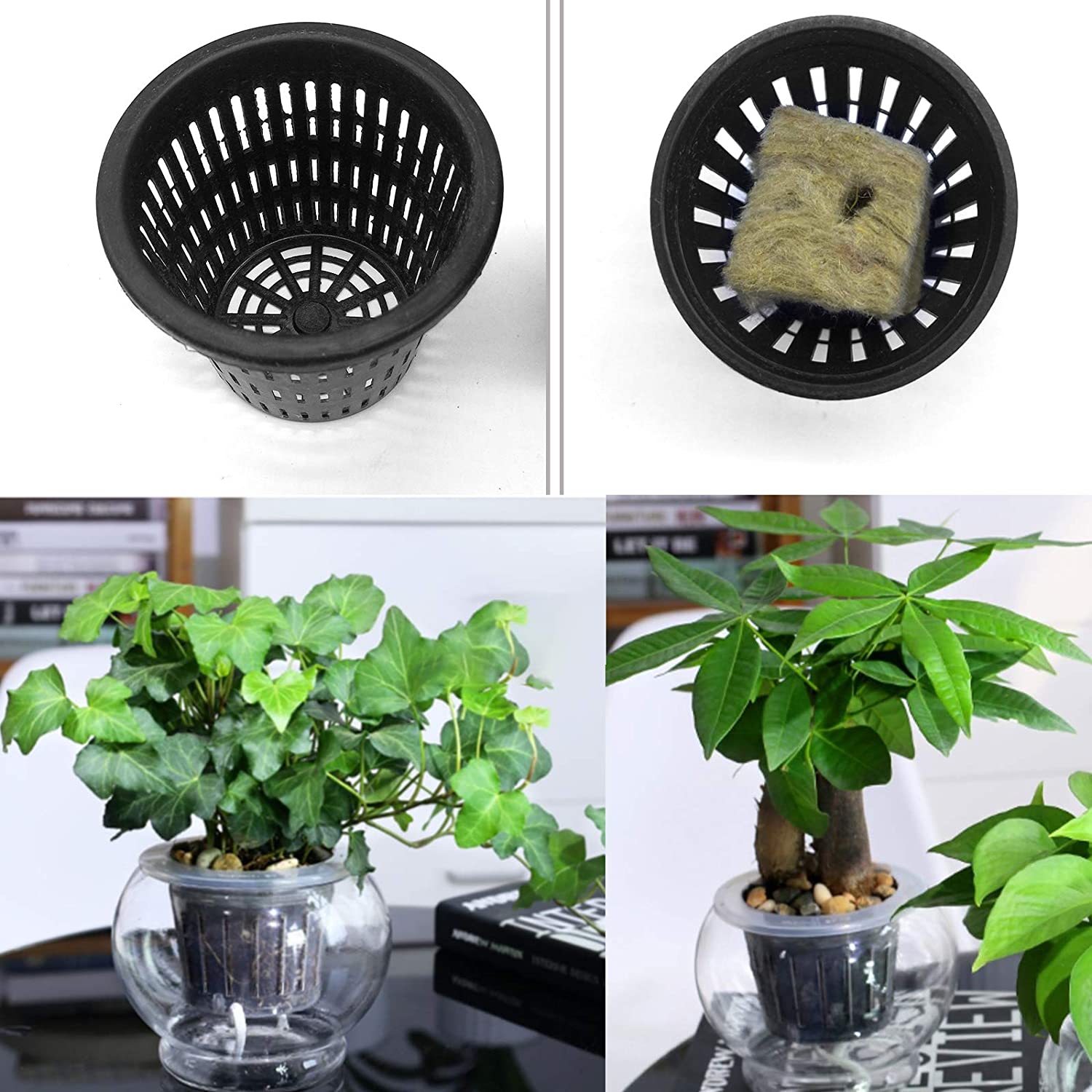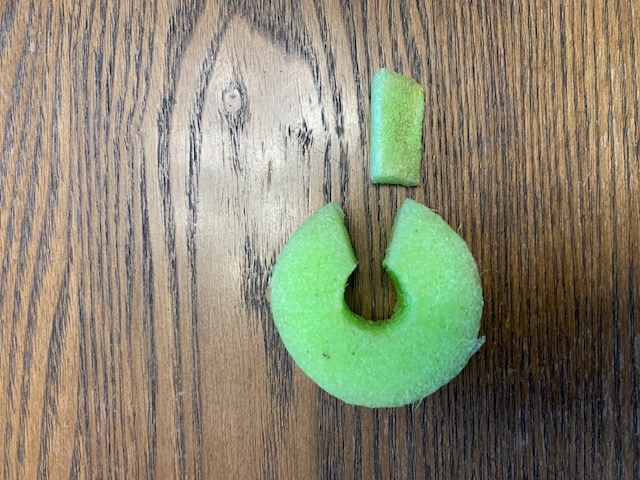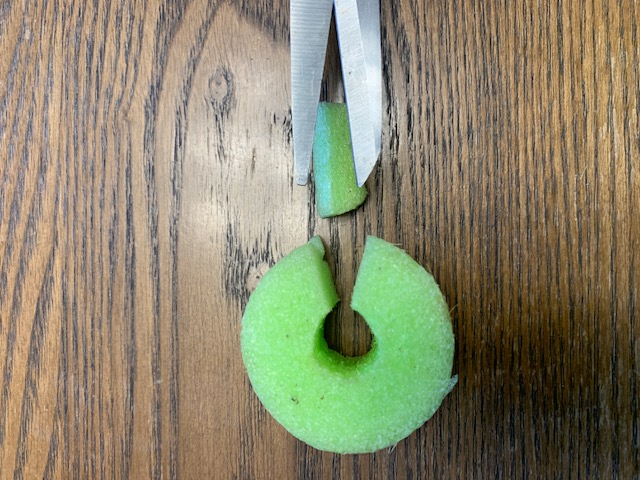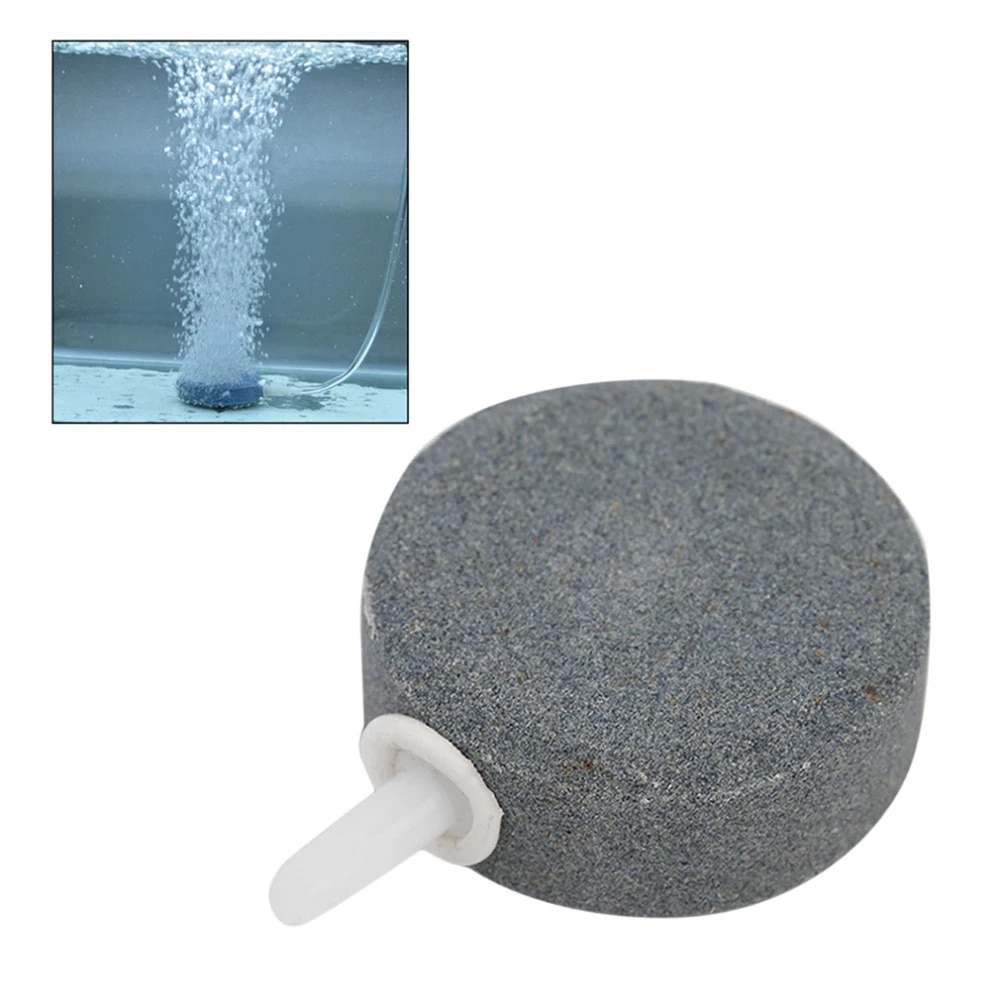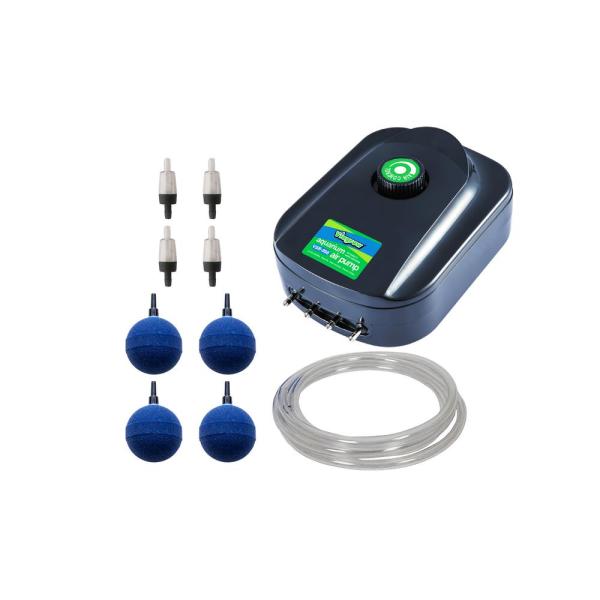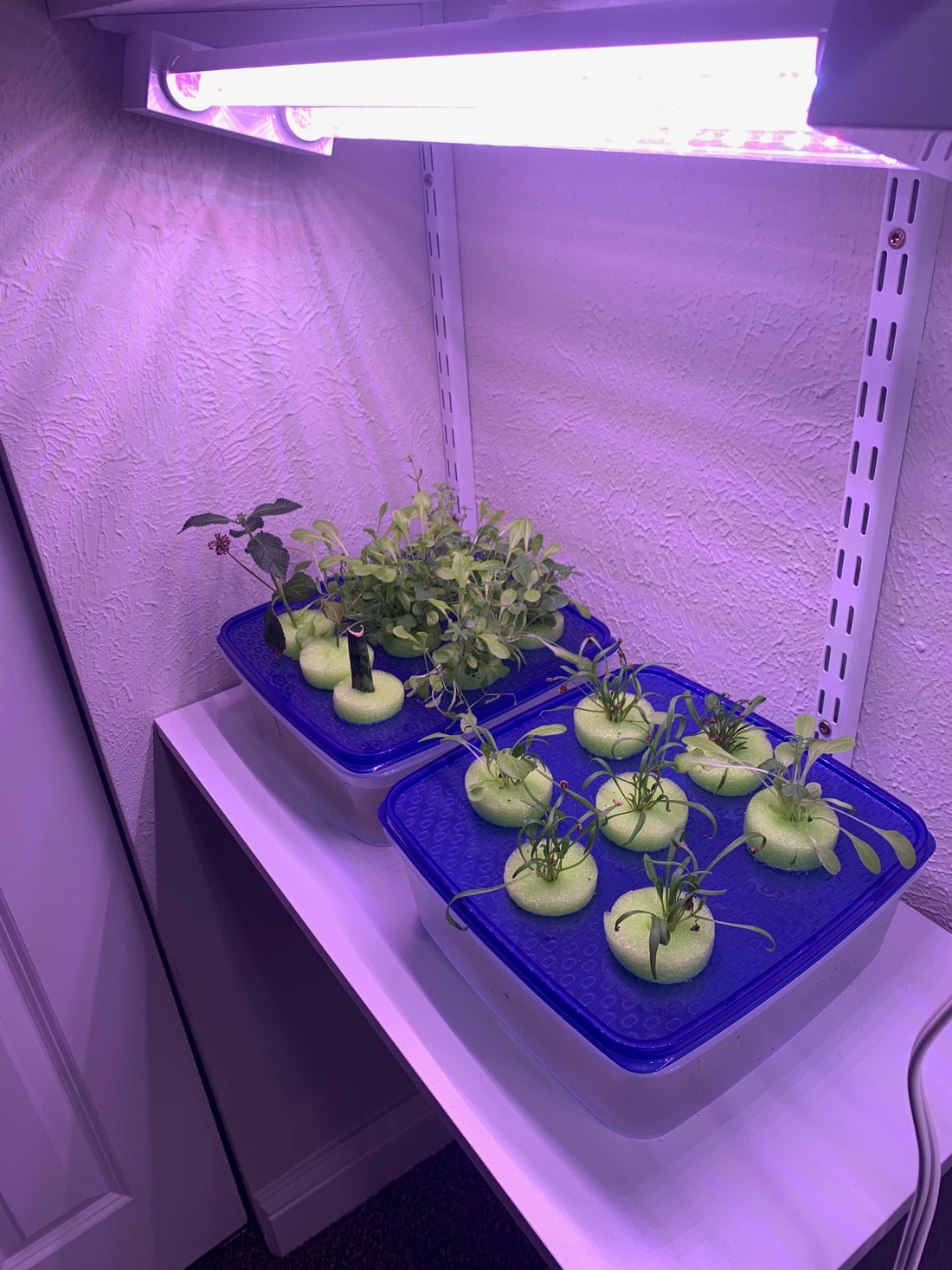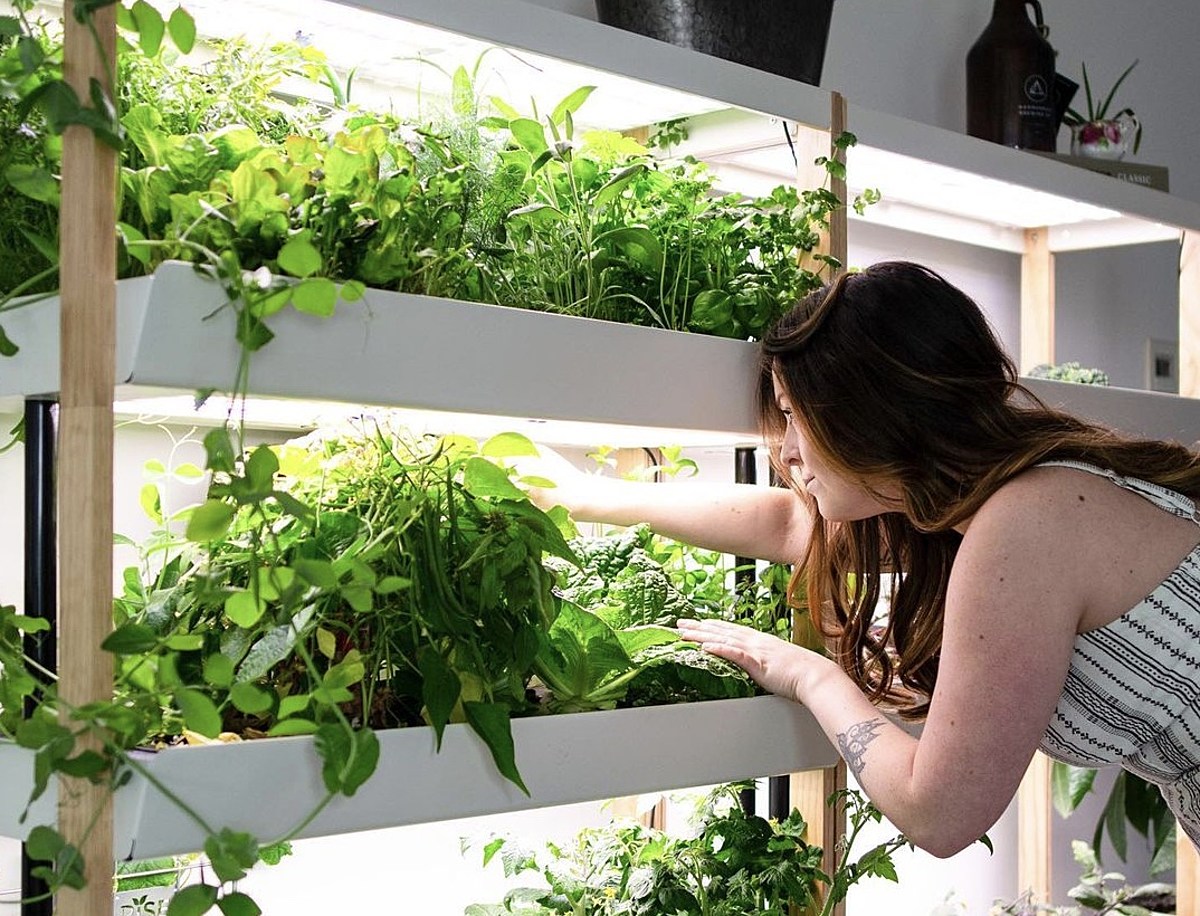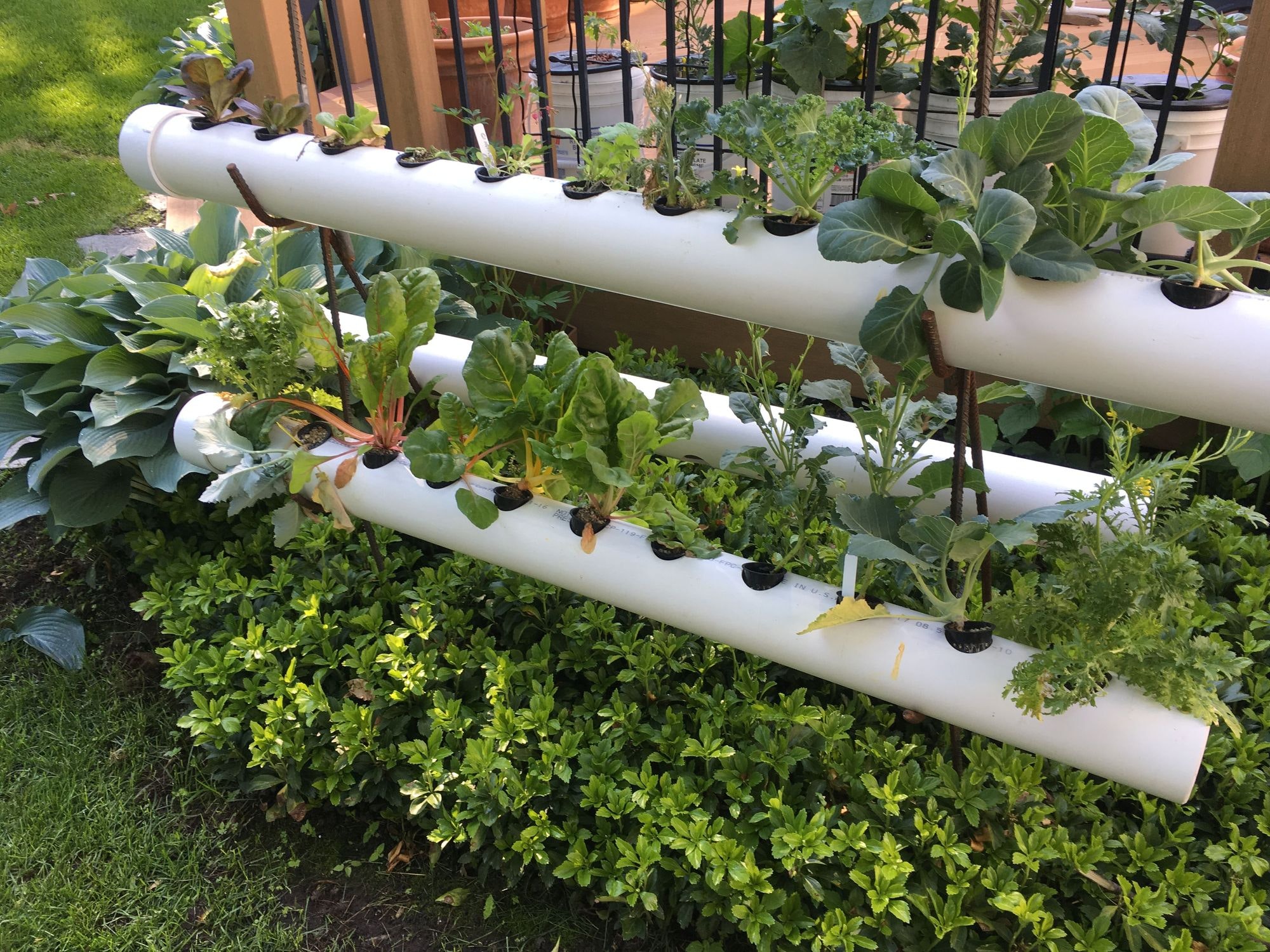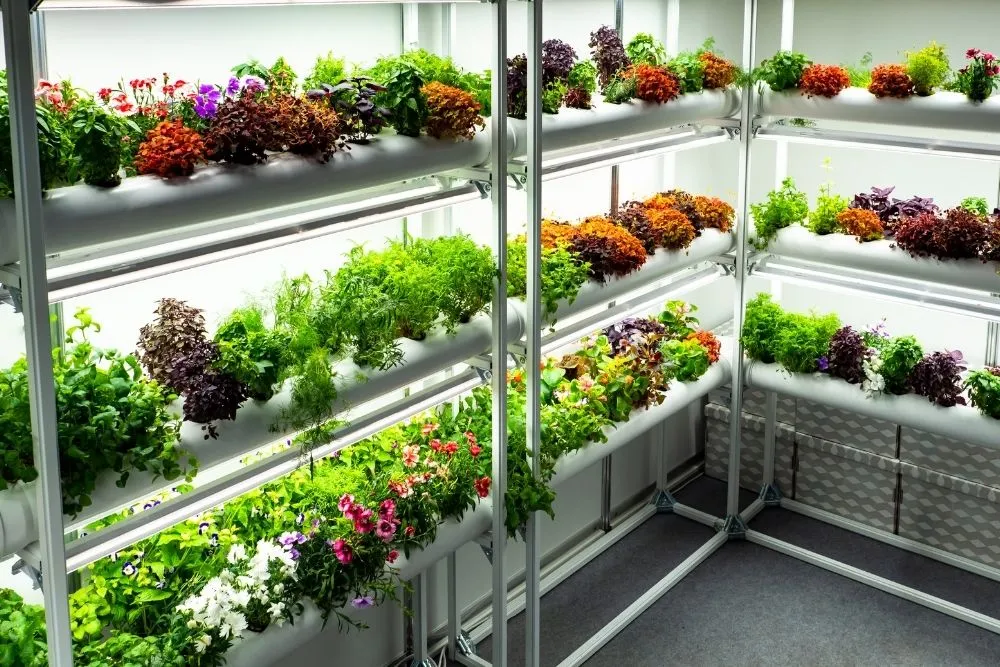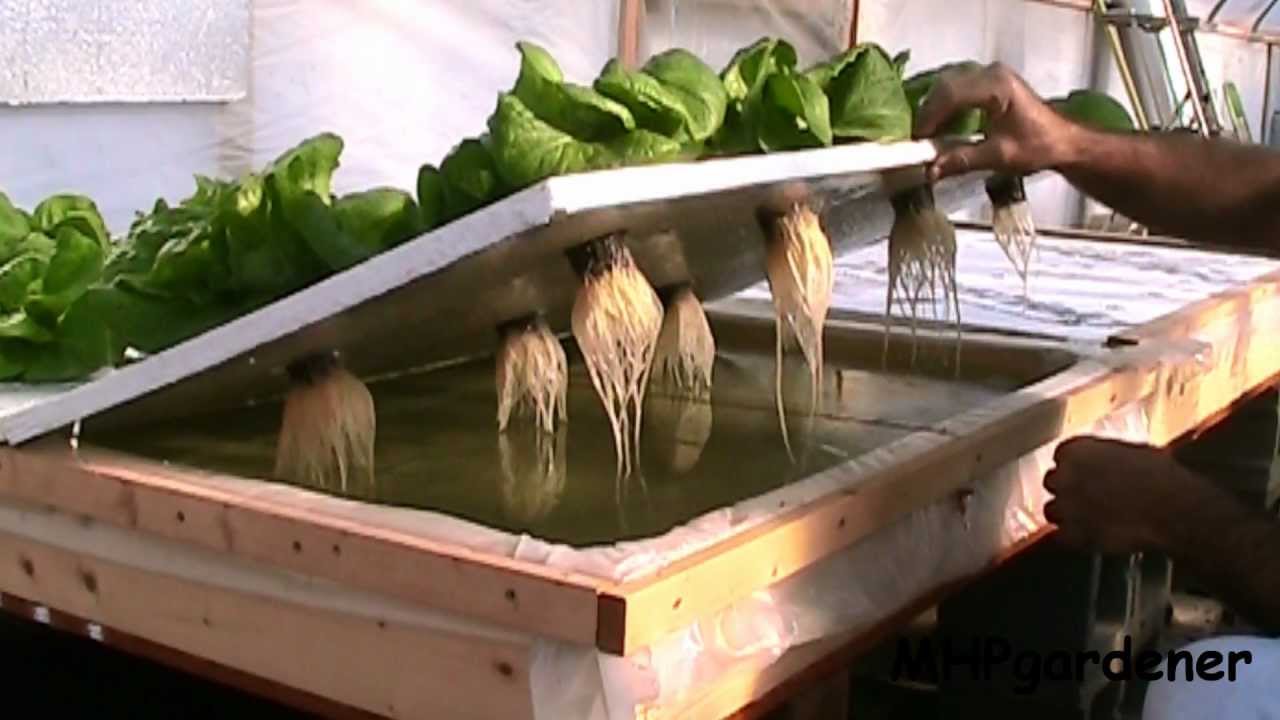Hydroponics
Summary:
Hydroponics is a technique of growing plants without soil. Usually a plant is held over a container and the plant roots are semi submerged in a solution of nutrients that is mixed with water. It can be used both indoors and outdoors and is especially good at growing extremely large plants quickly. A big benefit to hydroponics is you can tweak the nutrient levels to the specific plant, and create more of a microclimate if you are growing rare or very specific types of plants.
There are both low tech, very minimal energy intensive ways to grow with hydroponics, and higher tech methods that cut down on algae growth and can make some plants grow even bigger.
It is simple to start and maintain, the materials needed range but you can start growing hydroponically using upcycled materials, make your own reseviors or purchase pre-made systems.
Basic Components:
- Plants
- Water
- Nutrient solution
- A container to hold the plants (lid preferable but optional)
- A method to keep the plant upright and not submerged in the nutrient solution
- Light source (sun or artificial)
That's it! You can get started growing pretty much anything, indoors, outdoors, out of season, doesn't matter!
How To:
First step you will need plants:
- You can start plants from seed and use a small greenhouse to grow them in soil, then transfer them into a hydroponics system.
- You can also use existing plants that have been growing in soil and move them into a hydroponics system. Moving mature plants with established roots in soil can be a challenge because you have to clean the roots of dirt, and that can be hard when roots grow a little crazy.
You can grow pretty much any plant in hydroponics, though some you cannot. Root vegetables like carrots, radishes, and onions will not be able to grow correctly as they need soil. There are ways to grow them in a hybrid approach but it is much easier to do in soil. Anything that grows underground typically will not work.
Hydroponics are great for pretty much everything else. You can grow amazing strawberries and giant heads of lettuce. Anything with roots will grow well in a hydroponics system.
Next you need a waterproof container
Use your imagination, anything that's waterproof can be used to grow a plant hydroponically. It can be an expensive custom made hydroponics rack, a 3D printed and sealed art piece vessel, a takeout container, a simple glass, tupperware, or a waterproof vase. All of them will work if you have a way to suspend the plant so it doesn't fall straight into the nutrient solution and has a little room for air near the roots.
Different net cups will come in different sizes, and if you buy a prebuilt container or system they may take a specific size. If you are using a recycled container, the size of the holes will depend on what size net cups you get or if you use something else to hold the plants.
The most common hole size is 2 inches.
Holding the plant in place
There are a couple options here but most people tend to use a combination of a net cup and rockwool.
The net cup holds the plant and roots in place and the rockwhool holds the plant, and acts kind of like soil. These are pretty standard and most hydroponic growers use these. There are downsides of cost, and the fact that once a plant has grown into rockwool, it can be next to impossible to separate the plant from it without sacrificing some roots. So keep that in mind.
Another interesting option is to use cut up pool noodles to hold the plant in place. Because they can expand and contract they can fit into systems that use traditional net cups. They are also reusable and because the roots don't grow directly into it, they grow into the nutrient solution, the pool noodle section won't harm the root structure. Do not recommend using pool noodles as a replacement for rockwool and growing the roots directly into it. The pool noddle is to hold the plant right above where the roots start, not to actually grow in.
Pool noodle net cup alternatives
You can use any pool noodle and cut it into about 1 - 1 1/2 inches thick disks. You will get a ton of little pool noodle pucks and these are super economical because they cost next to nothing to make.
Once you have your pool noodle broken down, for each one cut a part out of the circle. Don't cut it so big that it won't fit in your hydroponic basin.
The part you cut out from the noodle will be used as a wedge to hold your plant securely and keep it from falling or moving. Using the part you just cut, cut it into a slightly smaller sliver. You will get a feeling on how big or small it needs to be.
Then you put your plant in the hole with the wedge. Depending on how big the stalk is you might not need a wedge in there or you may need a decent sized one. Trim to your plants size needs. There is a sweet spot of not suffocating the plant, and not letting it fall into the solution so aim for the sweet spot.
Nutrient solution and water
You can experiment here, pretty much just looking for any kind of hydroponic solution. This can be found at garden centers, hydroponics stores or online. The solution can be very cheap and some hydroponic brands have different solutions for different growing stages.
You take the solution and dilute it into water, and you are done! Each brand will be different and call for specific measurements. They will have a chart on the bottle, It is easier to use a 5 gallon bucket with a lid just to ease measuring and the need for math. Fill up your water container and mix in your hydroponic solution and you are ready to rock.
High Tech Hydroponics Vs Low Tech Hydroponics
This will depend on your wants, needs and how many supplies you can afford. There is a stereotype of hydroponics being this insanely expensive way to grow plants, and it can get expensive quickly. For the most part though you don't need high end supplies to have amazing plants grow. There are a ton of different methods, so many that it would be hard to list them all here.
The higher tech methods use pumps and various methods of recycling the nutrient solution. There are flood and drain methods that water the plants at specific times. Deep Water Culture (DWC), Nutrient Film Technology (NFT), and a couple others. Here is an article going over all the different methods but the basics still apply to all of them.
Technology in this case doesn't mean technical complexity, but mostly that it requires added equipment or uses more electricity compared to the Low Tech versions which are more of a passive, less energy intensive way to do hydroponics.
High Tech / Active Hydroponics:
Air stones and airstone systems are often used in hydroponics as a method of introducing more oxygen to the plant roots. This can help plants grow to be healthier and also fight off algae growth by basically just spraying a bunch of air into the nutrient solution to keep it moving. These run off a central machine and have tubes running to each of the plants, you insert the air stone which is where the air comes out of.
These do add cost to the entire setup but can really help make sure the plants are receiving enough oxygen.
Low Tech / Passive Hydroponics:
There are less energy intensive options that don't require extra aeration. One is called the Kratky Method named after the scientist who has been researching no to low aeration plant growth. With the added benefit of lower costs both in equipment and electricity, there comes a cost. Algae will be the number one issue with Kratky method hydroponics. Growth will depend on your container material. Any material that is see through or light in color can allow algae to form. This doesn't happen everytime and most of the time it won't be an issue besides having some green nutrient solution. For the most part algae will not hurt the plants that much, but keep in mind it is another organism taking nutrients that should be going to your plants.
Don't stress too much about it. You can wrap containers in newspaper or use opaque or slightly darker containers to curb algae growth.
Here are plants in pool noodles in nutrient solution resting in a tupperware container. These plants have no extra aeration which cuts down on costs. You can also grow these outside as well and never need artificial light. The benefit of growing indoors is you can grow plants out of season or in the dead of winter, sometimes it can be worth it. You decide that for yourself when embarking on the journey of growing plants in hydroponics.
Examples:
Hydroponic flood tray system made from wood and pond liner with polystyrene holder to suspend multiple plants. This also carries over into aquaponics systems.
Resources:
Full detailed breakdown of the different hydroponic systems
Growing veggies with the Kratky method
Pool noodle net cups / cheap hydroponics
Growing food in upcycled containers
